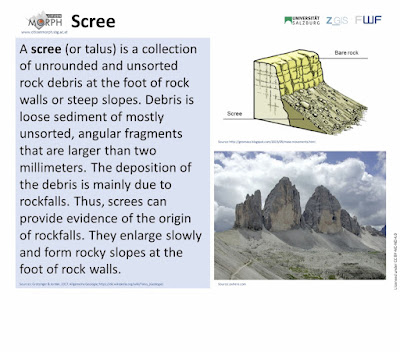Soil flow/Solifuction Mud flow Rotational slide/slump Rockfall Soil creep Mudflows Occurs when the slope materials become so saturated that the cohesive bond between particles are lost. Saturated material then flow downslope like a thick fluid. The flow stop when water is lost through seepage. Mudflow occurs at steeper slopes causing rapid run-off, after periods of intensive (heavy) rainfall volume and weight is added to the soil. The soil overlies impermeable bedrocks, when mud loses its momentum large boulders are deposited. Soil creep Is the slow movement of soil down the slope it occurs on a very gentle slope , where there is vegetation cover. The rate of soil creep increases when the soil on the slope is wet, soil creep is caused by earthquakes, alternate wetting and drying of the soil, movements of animals, heating and cooling of soil. Soil creep is destructive because it can dislocate telephone poles, trees, stone walls and fencing



